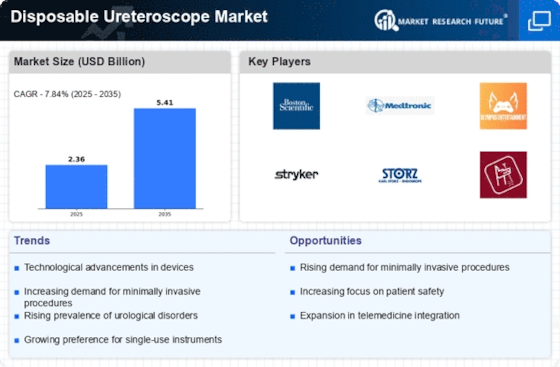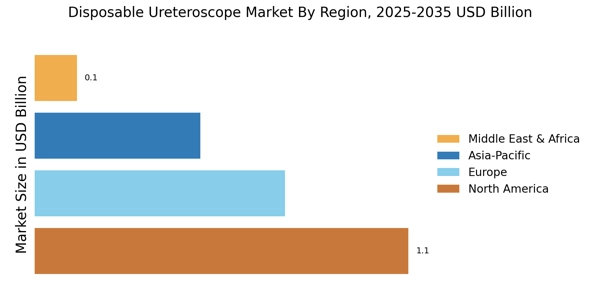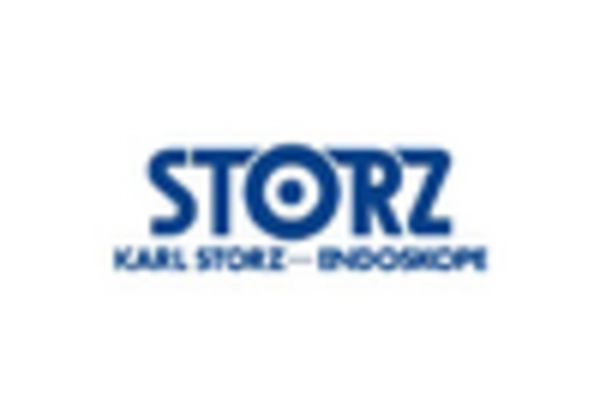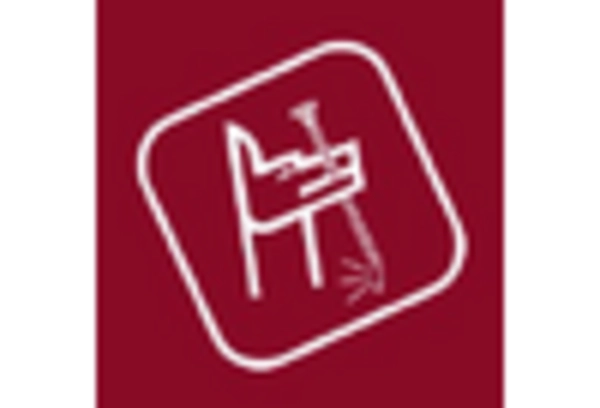Focus on Infection Control
Infection control remains a paramount concern in surgical procedures, significantly influencing the Disposable Ureteroscope Market. The use of disposable ureteroscopes mitigates the risk of cross-contamination and hospital-acquired infections, which are critical considerations in urological surgeries. With healthcare facilities increasingly prioritizing patient safety, the demand for single-use devices is on the rise. Recent studies indicate that hospitals adopting disposable ureteroscopes have reported a decrease in infection rates by up to 30%. This focus on infection control not only enhances patient safety but also drives the growth of the Disposable Ureteroscope Market, as healthcare providers seek to implement best practices in infection prevention.
Cost-Effectiveness of Disposable Devices
The cost-effectiveness of disposable ureteroscopes is emerging as a crucial factor in the Disposable Ureteroscope Market. While the initial purchase price may be higher than reusable devices, the overall cost savings associated with reduced sterilization processes, lower infection rates, and decreased complication management are compelling. Healthcare facilities are increasingly recognizing that disposable ureteroscopes can lead to lower total costs in the long run. Furthermore, the convenience of having a ready-to-use device eliminates the need for extensive reprocessing, which can be time-consuming and resource-intensive. As cost considerations become more prominent in healthcare decision-making, the Disposable Ureteroscope Market is likely to benefit from this trend, as institutions seek to optimize their operational efficiencies.
Technological Advancements in Ureteroscopy
The Disposable Ureteroscope Market is experiencing a surge in technological advancements that enhance the efficacy and safety of ureteroscopy procedures. Innovations such as high-definition imaging, flexible designs, and improved materials are being integrated into disposable ureteroscopes. These advancements not only facilitate better visualization during procedures but also reduce the risk of complications. The market is projected to grow at a compound annual growth rate of approximately 8% over the next few years, driven by these technological improvements. As healthcare providers increasingly adopt these advanced devices, the Disposable Ureteroscope Market is likely to witness a significant transformation, leading to enhanced patient outcomes and operational efficiencies.
Increasing Prevalence of Urological Disorders
The rising prevalence of urological disorders, such as kidney stones and urinary tract infections, is a significant driver for the Disposable Ureteroscope Market. As the incidence of these conditions continues to escalate, the demand for effective diagnostic and therapeutic tools, including disposable ureteroscopes, is expected to grow. Reports suggest that kidney stones affect approximately 10% of the population at some point in their lives, leading to an increased need for ureteroscopy procedures. This growing patient population necessitates the adoption of advanced, single-use ureteroscopes, thereby propelling the Disposable Ureteroscope Market forward as healthcare systems adapt to meet the rising demand.
Rising Demand for Minimally Invasive Procedures
The trend towards minimally invasive procedures is a key driver in the Disposable Ureteroscope Market. Patients and healthcare providers alike are increasingly favoring techniques that minimize recovery time and reduce postoperative complications. Disposable ureteroscopes align perfectly with this trend, offering a sterile, single-use option that eliminates the need for reprocessing. This shift is reflected in the growing number of ureteroscopy procedures performed annually, which has seen an increase of over 15% in recent years. As the demand for minimally invasive surgical options continues to rise, the Disposable Ureteroscope Market is poised for substantial growth, catering to the evolving preferences of both patients and surgeons.


















Leave a Comment